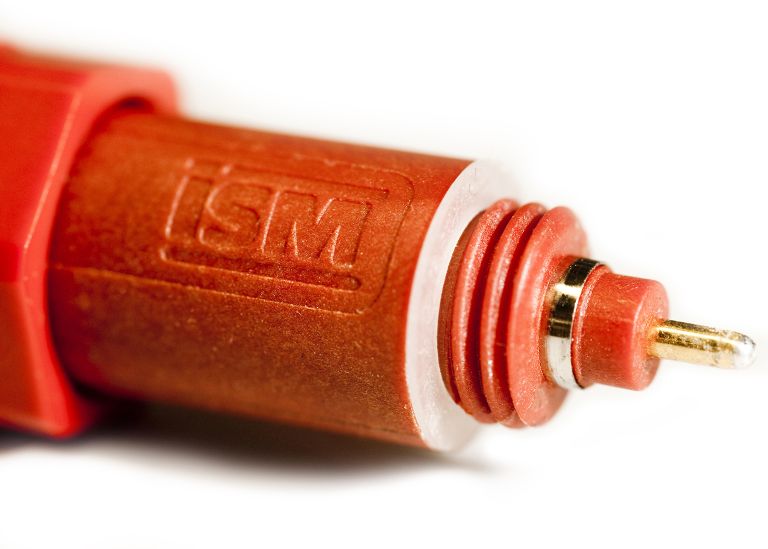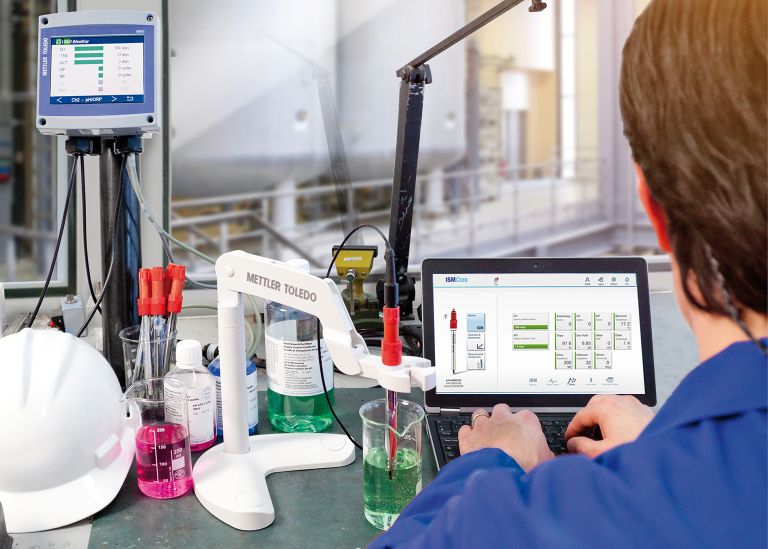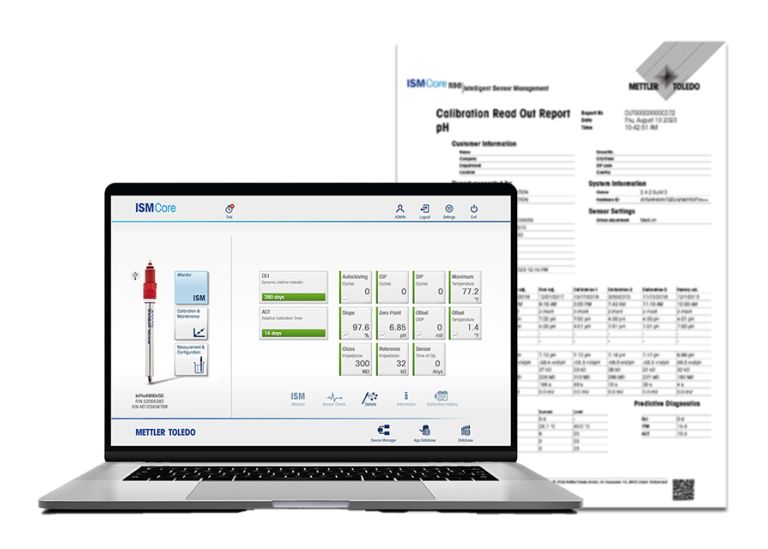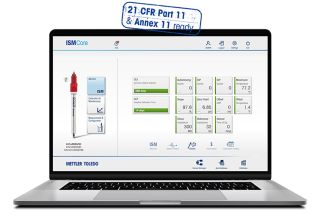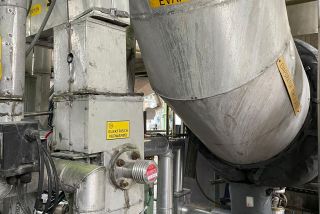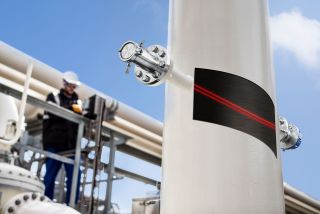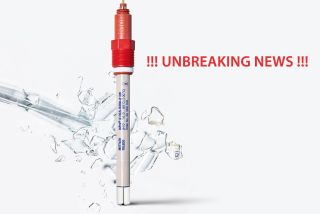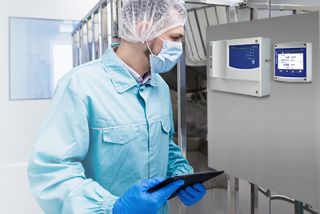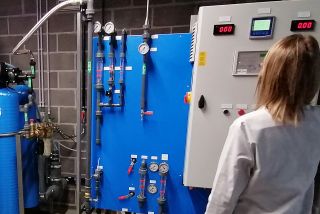
ISM: The intelligent platform for inline liquid analysis
Digital and intelligent sensors, meanwhile, have long been the standard for inline sensors for liquid analysis. Mettler Toledo pioneered the first intelligent pH electrodes nearly 20 years ago! The Intelligent Sensor Management (ISM) concept was born. Today, ISM has grown into a complete platform for inline and online liquid analysers, from sensors for pH, dissolved oxygen (DO), conductivity and ozone to fully fledged analysers for TOC, sodium, silica and phosphate.
No more malfunctions
ISM sensors with digitisation is the alternative to traditional analogue electrodes. It is easy to recall the problems that came with cables and moisture with the old pH or oxygen sensors. The intelligence is in the head. The measurement signal is digitised in the head of the sensor. Only the digital signal is sent over the cable to the measuring converter (transmitter). This makes the signal insensitive to interference from earth potentials, stray currents, electromagnetic waves and moist cables and connectors.
It goes without saying that an interference-free signal brings great benefits to companies and production processes. A stable signal provides better process control, less maintenance and calibration, reliable measurement results and therefore more efficient processes and better product quality.
Intelligence provides benefits
By building intelligence and memory into sensors, it is possible to store calibration data in the sensor head. For this reason, you can immediately start using the sensor without calibration (the factory calibration is in the memory), which saves a lot of time during start-up and commissioning. Since the sensors are digital, you can connect them to a PC through a USB port and calibrate them with the ISM Core software package. That also presents unprecedented opportunities.
On-site calibration is a thing of the past! In the digital age we live in, sensors are calibrated using a PC. Instead of using buffers, standards, rinse water and (hazardous) cleaning products (e.g. acids or solvents) while dealing with all kinds of weather and wind to go to a measurement point, you now simply take the sensor to the workshop and replace the used sensor with another one that is in good condition and pre-calibrated. You can clean the sensor safely in the workshop and store it under ideal conditions. When it suits you, you can monitor, evaluate and calibrate the collected sensors using ISM Core. You can then reconnect the perfectly calibrated sensor to the measurement point in the process.
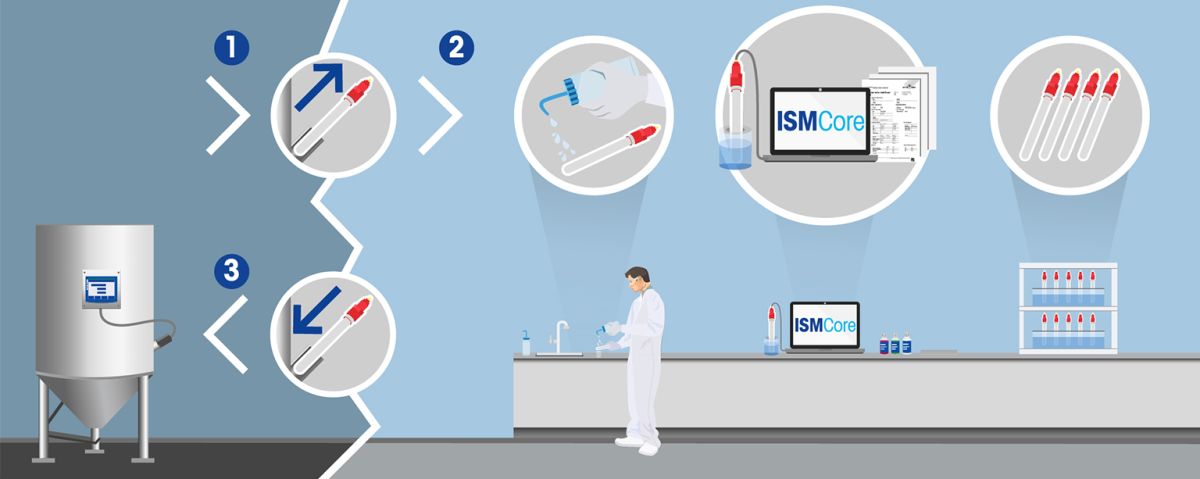
This way of working can dramatically increase the lifespan of a sensor, perhaps even double it. The reason for this is simply because you can condition the sensor much better, clean it properly and as required, and take the time needed for calibration, as opposed to calibration on-site where you are under time pressure, in difficult conditions and with limited resources. The software also seamlessly guides you through the calibration routine, thereby limiting human errors. The benefits are clear: a more accurate calibration result, which in turn provides accurate measurements and therefore a more stable process and better product quality. At the same time, you also save on the consumption of sensors and time, thereby reducing maintenance costs.
Predictable
When it comes to digitalisation and intelligence, algorithms that can make predictions are not far off. This is no different when it comes to ISM sensors and analysers. The ISM indicates the remaining expected lifespan (DLI, Dynamic Lifetime Indicator) based on measured values, calibration data and history, diagnosis and some specific parameters.
Sensors and analysers still require maintenance. With ISM, you have a tool in your hands that helps you with predictive maintenance. This provides you with information about when the next maintenance interval is due (TTM - Time To Maintenance) or when it is time for a calibration (ACT - Active Calibration Timer). Note that all this information is dynamic and depends on process conditions. These are by no means static counters, but that is exactly what you want! Perform maintenance exactly when needed: not too early and certainly not too late! Moreover, it also helps you manage inventory. The information provided by ISM means that you can ensure that the necessary sensors, reagents and parts are in stock so there are no surprises.
All the information you can get from ISM is clearly readable on the measuring converter or the analyser itself. You most likely do not walk past every device every day, however. Digital communication (Profinet, Ethernet IP, HART, Modbus, etc.) transmits all data from the field flawlessly to the control room and Process Management System, where everyone can access it.
Evidence on paper
When it comes to the pharmaceutical industry and biotechnology, in particular, you need to be able to demonstrate that analysers and sensors have been validated and/or calibrated in a timely and correct fashion. This is also the case in the chemical industry. ISM helps you do this. A special version of ISM Core, the software that plays a central role in the whole ISM concept, accurately tracks who performed which operation. All calibration reports and history are stored by serial number. This data should not be edited in the context of Data Integrity, and is therefore encrypted. Everything is therefore documented, but not necessarily on paper.
Conclusion
For a while now, ISM is not only a digital pH electrode. It is rather a total solution for inline and online analysers and sensors that allows you to produce reliable measurement results, reduce maintenance, save costs and optimise the production process in one move.
The concept rests on three pillars: Measure, Integrate and Manage. ISM sensors provide interference-free measurements with comprehensive diagnostic capabilities (Measure). Analysers and measuring converters provide integration, diagnosis and communication (Integrate), while the ISM Core software helps you with (predictive) maintenance, monitoring the status of sensors and analysers, keeping historical records and delivering documentation (Manage).
